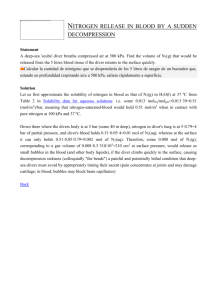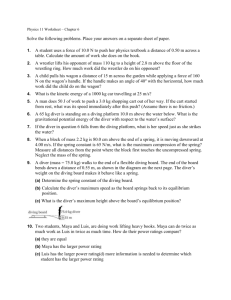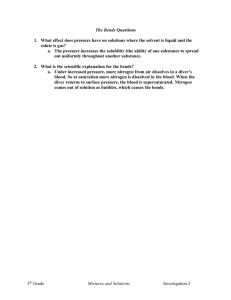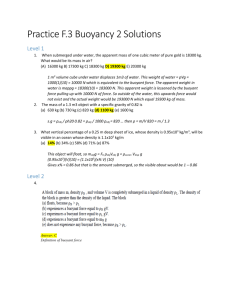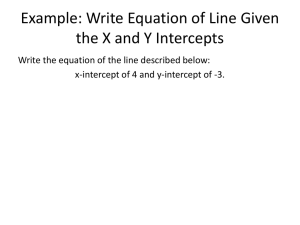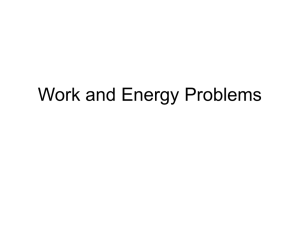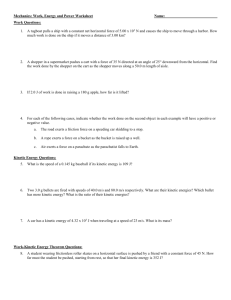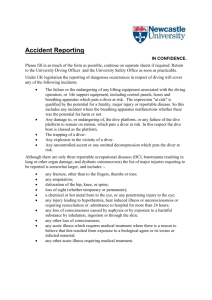The Five Minute Neurological Exam
advertisement
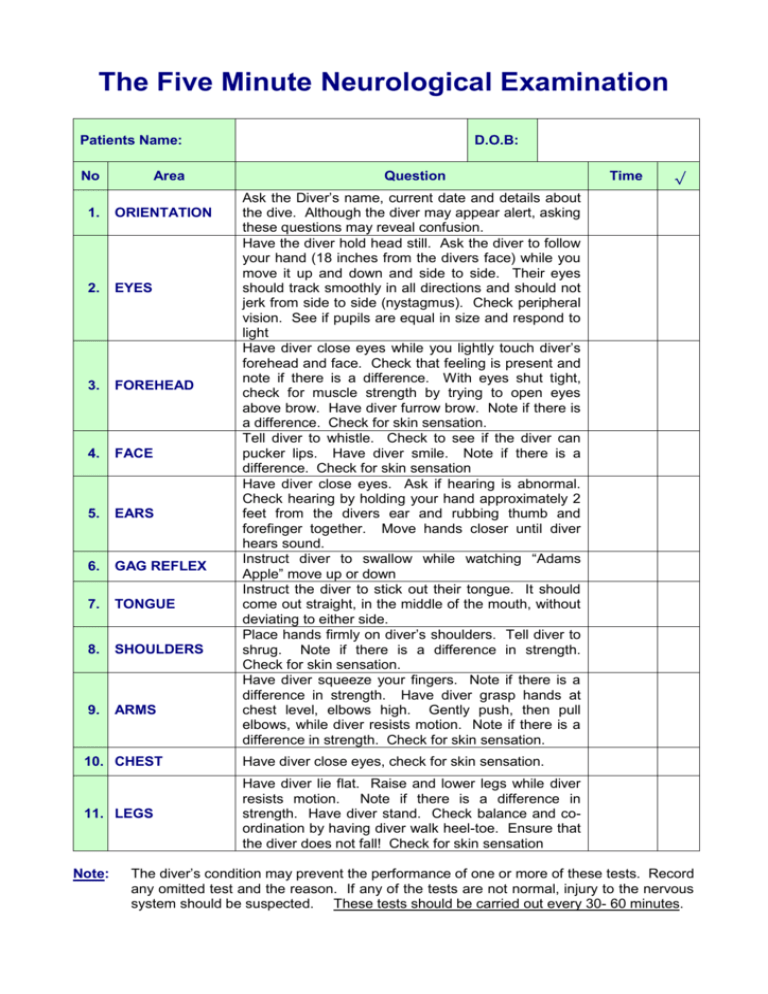
The Five Minute Neurological Examination Patients Name: No Area 1. ORIENTATION 2. EYES 3. FOREHEAD 4. FACE 5. EARS 6. GAG REFLEX 7. TONGUE 8. SHOULDERS 9. ARMS D.O.B: Question √ Ask the Diver’s name, current date and details about the dive. Although the diver may appear alert, asking these questions may reveal confusion. Have the diver hold head still. Ask the diver to follow your hand (18 inches from the divers face) while you move it up and down and side to side. Their eyes should track smoothly in all directions and should not jerk from side to side (nystagmus). Check peripheral vision. See if pupils are equal in size and respond to light Have diver close eyes while you lightly touch diver’s forehead and face. Check that feeling is present and note if there is a difference. With eyes shut tight, check for muscle strength by trying to open eyes above brow. Have diver furrow brow. Note if there is a difference. Check for skin sensation. Tell diver to whistle. Check to see if the diver can pucker lips. Have diver smile. Note if there is a difference. Check for skin sensation Have diver close eyes. Ask if hearing is abnormal. Check hearing by holding your hand approximately 2 feet from the divers ear and rubbing thumb and forefinger together. Move hands closer until diver hears sound. Instruct diver to swallow while watching “Adams Apple” move up or down Instruct the diver to stick out their tongue. It should come out straight, in the middle of the mouth, without deviating to either side. Place hands firmly on diver’s shoulders. Tell diver to shrug. Note if there is a difference in strength. Check for skin sensation. Have diver squeeze your fingers. Note if there is a difference in strength. Have diver grasp hands at chest level, elbows high. Gently push, then pull elbows, while diver resists motion. Note if there is a difference in strength. Check for skin sensation. 10. CHEST Have diver close eyes, check for skin sensation. 11. LEGS Have diver lie flat. Raise and lower legs while diver resists motion. Note if there is a difference in strength. Have diver stand. Check balance and coordination by having diver walk heel-toe. Ensure that the diver does not fall! Check for skin sensation Note: Time The diver’s condition may prevent the performance of one or more of these tests. Record any omitted test and the reason. If any of the tests are not normal, injury to the nervous system should be suspected. These tests should be carried out every 30- 60 minutes.
